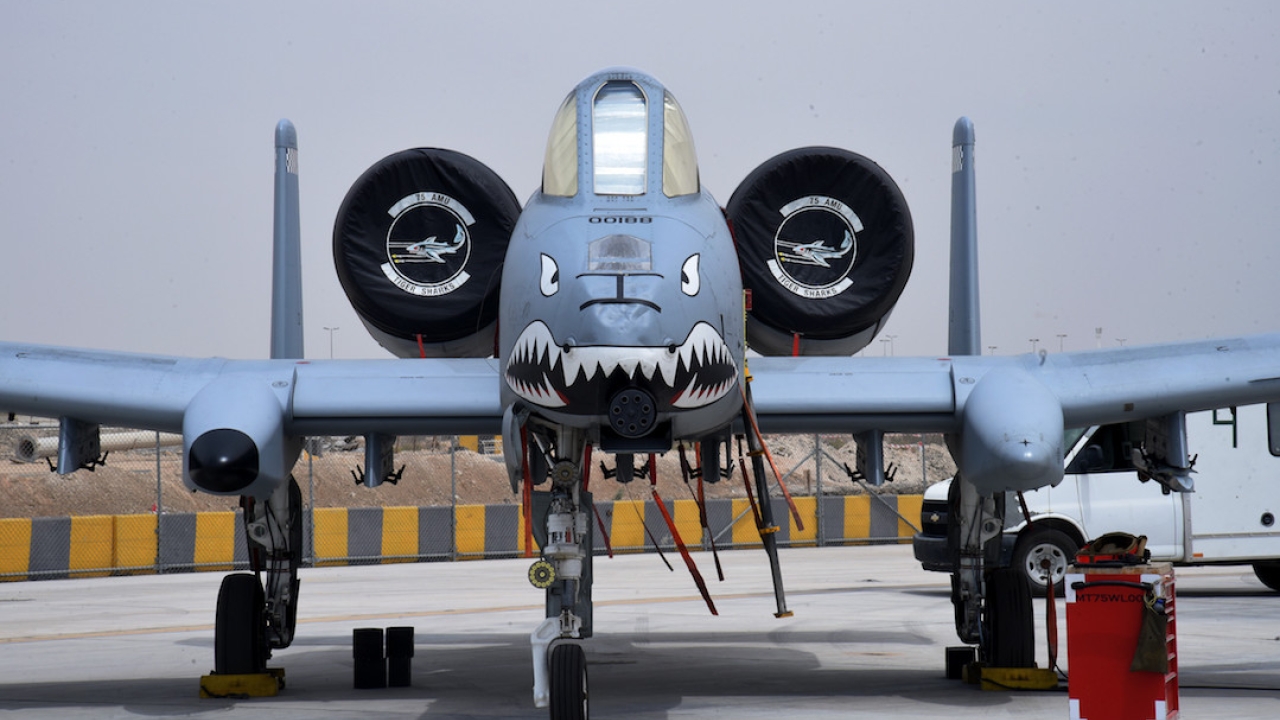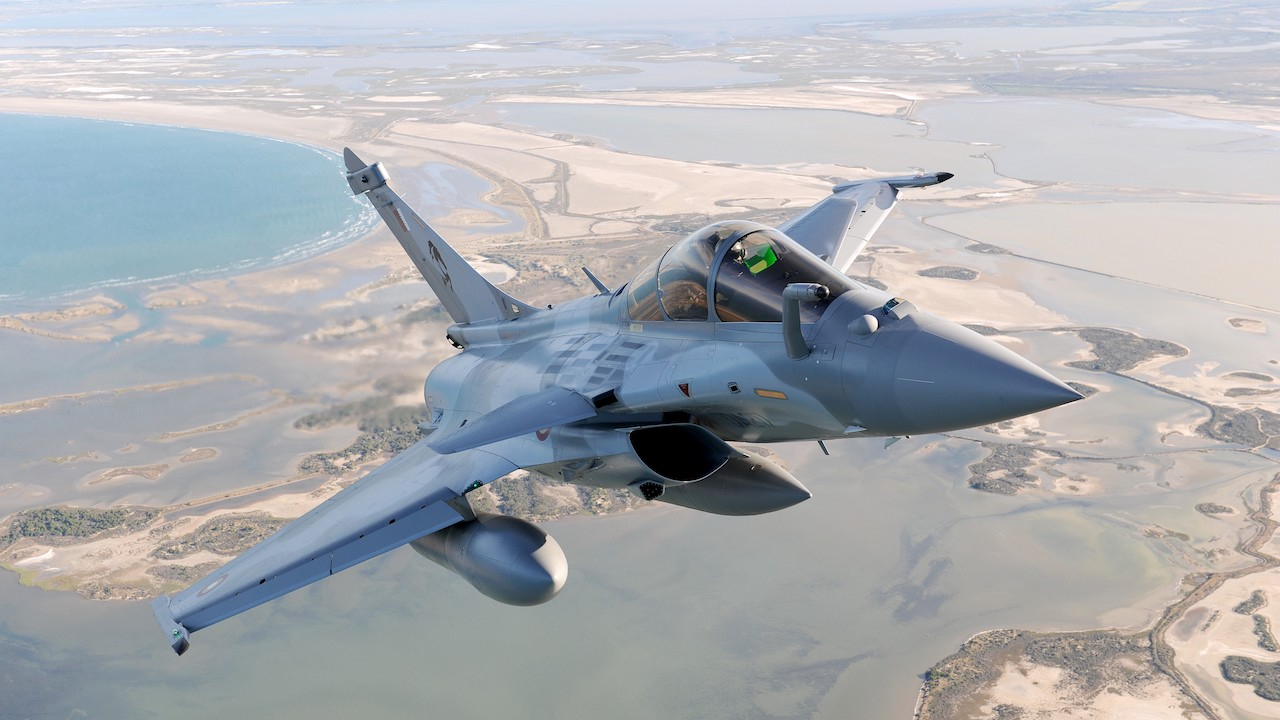Has the US lost its bite?
While much of the USA’s focus has shifted to Europe – and specifically to Russia’s war in Ukraine and also to long-term competition with China in the Indo-Pacific, the US remains committed to the US Central Command area of responsibility in the Middle East/South West Asia. But while the US is still supporting its allies and partners in the region, there are some signs that it plans to do so with fewer based force elements – and by changing the aircraft types deployed and/or the scale and duration of deployments.

JAW DROPPING: A-10C Thunderbolt of the 23rd Wing deployed to Al Dhafra in April, boosting US fighter numbers in the region and allowing 'higher end fighters' to deploy elsewhere. Picture: US Air Force
Despite a January 2023 visit to the region by US Air Force Chief of Staff Charles Q. Brown Jr which included “key leader engagements in multiple countries,” many believe that they can see evidence of a reducing commitment, with permanent rotational deployments giving way to ‘flying visits’ by small ‘Bomber Task Force’ elements, and shorter and non-continuous fighter deployments. This, it has been suggested, forms part of a broader strategy of maintaining a more modest US presence in the region in order to free up resources for countering Russia and China.
US Air Forces Central (AFCENT) is continuing to support the ongoing campaign against Deash (the so-called Islamic State’s self-declared caliphate in Iraq and Syria) as part of Operation Inherent Resolve, and is also facing increasing threats from Iran and its proxies, including missile and drone attacks against US bases in Iraq and Syria. This occasionally includes retaliatory air strikes – for example when US forces were attacked by Iranian-backed militias using loitering munitions on March 23, USAF F-15Es flying from al-Udeid mounted precision airstrikes against them.
At the Air Force Association’s Warfare Symposium, the commander of Air Forces Central (AFCENT), Lt. Gen. Alexus G. Grynkewich, said that “We’ve seen an increase in Russian air activity where there was a pause.” He said that Russian operations has picked up at the end of February, and that Russia had become increasingly belligerent towards US forces in the region.
Previously struggling to meet a requirement to base two and a half squadrons of fast jets in the region, the USAF augmented the F-16s at Prince Sultan Air Base at Al Kharj in Saudi Arabia and the F-15Es at al-Udeid by deploying a squadron of Fairchild A-10C Thunderbolt IIs to the 380th Air Expeditionary Wing at Al Dhafra Air Base, in the United Arab Emirates in April 2023.
As well as ‘beefing up’ force levels, and compensating for aircraft being deployed elsewhere, the arrival of the A-10C afforded an opportunity for the 9th Air Force (Air Forces Central) to experiment with CAS capabilities and to achieve a more robust, diverse force.
Critics argued that deploying A-10s to the Middle East in the place of more capable multi-role fighters would undermine the confidence of US regional allies.
The US has sought to reassure its allies in other ways, stepping up the scale and frequency of exercise – such as the massive bilateral Juniper Oak live-fire exercise with Israel in January involving more than 100 American aircraft. The USAF has also stood up Air Forces Central’s Task Force 99 which will apply autonomous solutions and artificial intelligence to bolster traditional platforms.
The USAF has also increased bomber task force missions in the region, most recently deploying a pair of B-1B Lancers over the U.S. Central Command area of responsibility, where they exercised with five partner nation air forces and other coalition forces.
The B-1Bs, from Dyess Air Force Base’s 9th Bomb Squadron, had been forward deployed to Royal Air Force Fairford in the United Kingdom from where they flew a mission on 7/8 June using multiple weapons types. The two aircraft practiced weapons employment against multiple simulated targets during the mission, dropping live GBU-38 joint direct attack munitions, as well as an AGM-158A joint air-to-surface stand-off missile.
US Air Force lt. gen. Alexus Grynkewich, ninth air force (Air Forces Central) commander, and combined forces air component commander for U.S. Central Command said that: “These bomber missions represent the US’s commitment to our partners and showcase our ability to deliver overwhelming power at a moment’s notice.”
Further action was undertaken after what General Grynkewich called “Russian unprofessional behavior in the air, with more frequent instances of armed Russian aircraft engaging in the ‘harrassment’ of US ground forces, and attacking US-supported opposition forces. There were also said to have been 63 violations of established deconfliction protocols between March 1 and April 19.
In response, the US deployed Lockheed Martin F-22 Raptors from the 94th Fighter Squadron at Joint Base Langley–Eustis in Virginia to Muwaffaq Salti Air Base in Jordan in mid June 2023.
Stay up to date
Subscribe to the free Times Aerospace newsletter and receive the latest content every week. We'll never share your email address.


